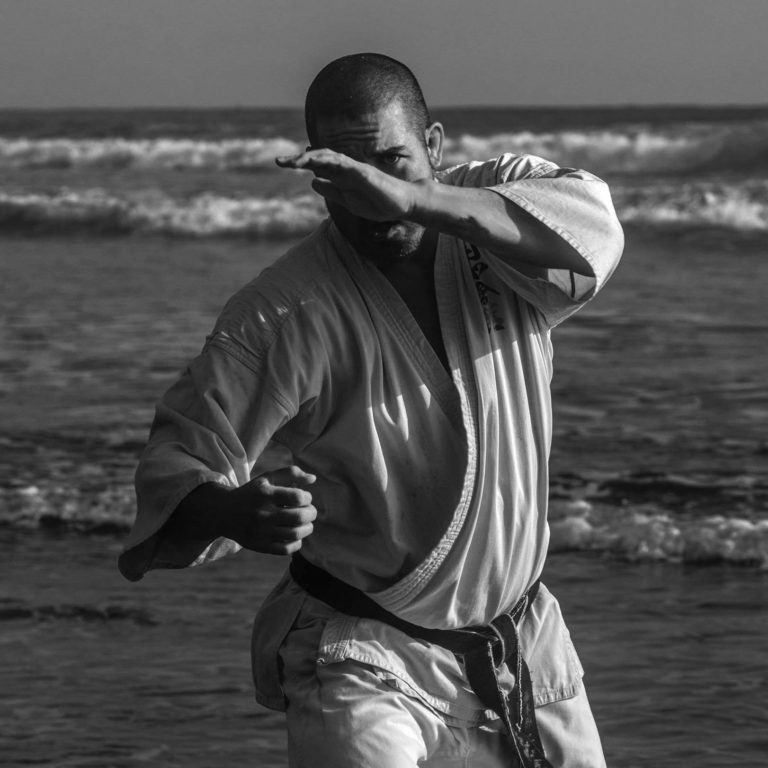

And let's ask ourselves how many people out on the streets would know about Hideyuki Ashihara's exposition of sabaki? What are the odds that some thug is going to know that this particular technique exists, let alone how to defend it? And who walks around with a sign on his back that says "I train in Kyokushin Karate and I know how to use the sabaki technique."? And this, again, is why I prefer it for a real fight outside of the dojo particularly if I find myself going up against someone who may be bigger and stronger than I am. I've managed to pull it off against exactly the type of people you just described (in the dojo) those who are less experienced and don't know about it. You may see more attempts at it in Enshin's Sabaki Challenge but those attempts are seldom successful due to the combatants trying to employ the technique from long range.īut this is why it was taught by Hideyuki Ashihara to be used in street fights and why I believe that it is more applicable and practical in no rules fights on the street.

Even in Ashihara and Enshin competitions you don't see it for this second reason. In fact, I would go so far as to say that the sabaki technique kinda sucks in knockdown rules competitions nowadays and mainly for two reasons one, the rules minimize how effectively you can use it and two, most competitors know how to deal with the "minimized use" of the sabaki technique. This is why I have been saying from the very beginning that my attraction to the sabaki technique is it's potential application in a real fight and not in competition. All of these attacking techniques can really hurt your opponent and successfully pulling off the sabaki technique can put you in a position vis-a-vis your opponent to use those techniques while still removing yourself from your opponent's line of attack. Because of obvious reasons certain fighting moves are not allowed in competition which can minimize the utility of sabaki such as no kicks allowed to the back of the knee joint, no direct attacks to the spine, no rising hiza geri to the back of the head, no ura nage from behind your opponent, no kicks to the back of the head, etc. I think another part of the problem is competition rules. Sabaki is more successful if you are able to exercise Control over your opponent and unbalance him and in order to do that you have to go in and clash to gain that control and kuzushi. It definitely is much easier to work against people who are less experienced than you or who don't really know enough about it.Ĭlick to expand.Yes, I can definitely see how this would be a problem particularly if someone is trying to employ sabaki from further out. The only thing is sometimes it's hard to set up a shots off the sabaki because there's nothing stopping the guy/girl opposite from transitioning straight away into grappling once you've initiated sabaki. I also think that sabaki is much easier as far as kudo goes - to pull off when someone is coming at you because if you've drilled it enough and have enough space/time - it can be done quite effectively & often. I think sabaki tends to work a lot better when it's set up with small consecutive moments rather than 1 big movement - as smaller movements are harder to pinpoint.

The range really makes a big difference as well - as when you're closer like in Enshin/knockdown - less distance/less time for an opponent to react to any sabaki attempt whereas in Kudo or even shotokan point fighting the range means opponents have more distance/more time to react to sabaki. In Kudo from what I've experienced it's not as easy - yes you have the benefit of grabbing pulling on the gi but the range is much further out than in knockdown/enshin and you have to contend with your face being a target & being grappled. I personally think pulling off sabaki isn't easy to begin with because in reality it's very easy to defend against - you just back off & reset your position - but I think it's much easier to pull off in Kyokushin - in knockdown karate and with Enshin/Ashihara & it's competition format. Sabaki applied in Enshin/Ashihara is very different from the way it's applied in Kudo. To add to the convo - I think a distinction needs to be made as well.


 0 kommentar(er)
0 kommentar(er)
